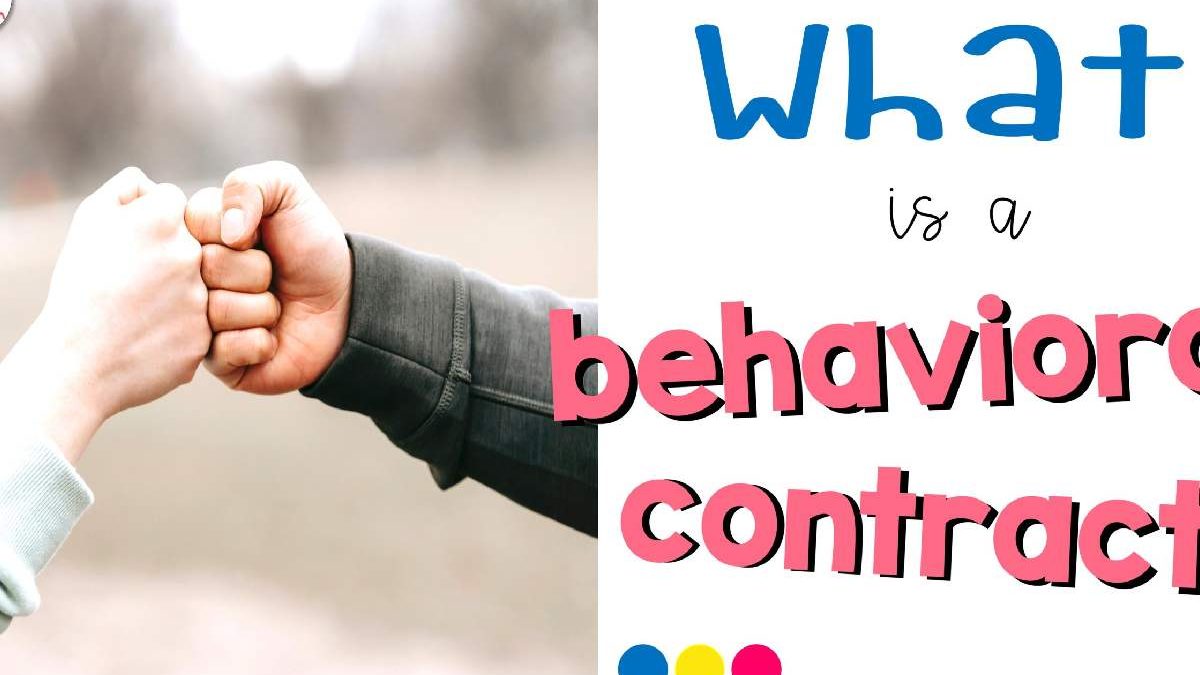What is an example of a Behavior Contract? – Behavioral contract example represents certain agreements between the employee and the employer. It establishes an expectation in employee behavior. Behavioral contracts have significant differences from other documents because they are not legally enforceable. They are used to implement expectations in different settings. They can often be signed in schools and other businesses.
There are behavior contracts in business that are used to set goals for expected behavior. They are widely used in organizations to set certain norms. Some companies may make customized contracts for employees.
Table of Contents
Positive and Negative Behavior Contracts
A social contract, also defined as a positive behavior contract, is created in large companies and organizations for all employees and management. Such contracts are designed to describe expectations and norms of behavior, employee performance of daily tasks in the workplace. They can be:
- attending meetings;
- participating in a variety of communication;
- responding to certain comments in a timely manner.
The rules are mostly related to workplace etiquette. According to such contracts, it is necessary to develop the use of statements that describe the behavior of employees in the workplace. Social contracts provide an opportunity for employees and employers to discuss workplace expectations and achieve goals.
Negative behavior contracts are an individual contract that is developed as needed to address certain workplace misconduct. Employers use such a contract to address violations that have been repeated in past social contracts. They are usually set up for the entire organization. This type of contract is not meant to punish, but in most cases, to raise awareness of expectations between employer-employee cooperation.
Use of Behavior Contract Templates
There are sample behavioral contracts that employers can use. Writing a social behavioral contract for an organization consists of developing initial positive statements. These establish general standards of behavior and each employee must adhere to them. They generally begin with the words “I will”. Next, the definition of commitment continues.
A negative behavior contract is used to address problem behaviors between employees and employers. It does not include goals that suggest refraining from certain behaviors. Abstaining from actions is a poor example. Instead, there should be a clear statement of terms that focus on desired behaviors.
The main goal is to arouse employees to refrain from behaviors that negatively impact the workflow. For example, using cell phones during work hours and many others.
Let’s consider an example of a discipline contract. It may include such goals:
- And I’ll be at the meeting 10 minutes before it starts.
- I will bring all the materials needed for the meeting.
- I will work with my cell phone off.
- I will actively share ideas and contribute to the development of the company.
- I will be friendly with clients and coworkers.
The sample on negative behavior can include the same goals. If it is necessary, it can be supplemented with other aspects:
- After arriving at work, I will immediately turn on my work computer.
- I will run all necessary programs on my computer for the work process within the specified time frame.
- I will not use my cell phone during working hours.
The contract can be fleshed out with other clauses that should be in line with company policy.
Candidates For a Behavior Contract
Contractual behavior can be useful for any person who is learning. The student behavior agreement forms are provided for this purpose. Such contracts are useful for children who suffer from impulsivity, hyperactivity and inattention. It is also suitable for children who have difficulties in organizing the learning process. It is recommended to use if children often throw tantrums and behave badly.
Contracting behavior helps the child to achieve goals in the learning process. It can also have a positive impact on overall development and behavior. They are best used for children who are in second grade and older. It is often for these contracts to be used for high school students.
Benefits of Using a Behavior Contract for Children
Behavioral contracting is effective for a variety of reasons. Let’s look at the main advantages:
- Improving the child’s behavior in school and at home. If the teacher is present when the goals of the contract are set, that would be great. You can also invite a social worker or psychologist to the meeting. Then you can develop conditions that will really help the child.
- A clear definition of expected outcomes. Such a contract clearly states what behaviors to focus on and defines the type of rewards for meeting the conditions.
- Motivation. This is a way to engage the child in self-regulation. He will be involved in different processes of defining the goals of the plan and will be able to choose the rewards for them. Then the child becomes more interested in achieving these goals and changes his behavior accordingly.
- Responsibility for actions. Children become more responsible for their actions because even the very word contract sounds serious and mature. As a rule, children take it very seriously and understand what consequences await them in case of failure to fulfill the conditions.
- Feedback. Usually teachers discuss with the child their behavior and every day children can express their thoughts, reflect on how to change themselves and become better. This also influences children’s self-development.
In drafting such a contract, you can use the Pandadoc tool. This software has different templates and samples with which you can create contracts correctly and quickly.
A behavioral contract can be created at any time and adjusted based on the school year or changes in working conditions. You don’t have to wait for a face-to-face meeting or see new rules. Once you create a contract, you have the ability to modify it at any time and add new terms and conditions.
Also Read: How Online PDF Editors Will Impact Paperless Offices?

